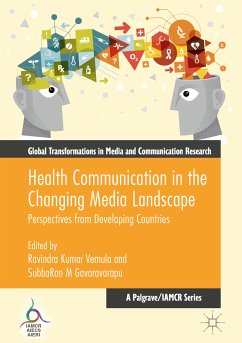
Emerging Genres in New Media Environments (eBook, PDF)
Versandkostenfrei!
Sofort per Download lieferbar
72,95 €
inkl. MwSt.
Weitere Ausgaben:

PAYBACK Punkte
36 °P sammeln!
This volume explores cultural innovation and transformation as revealed through the emergence of new media genres. New media have enabled what impresses most observers as a dizzying proliferation of new forms of communicative interaction and cultural production, provoking multimodal experimentation, and artistic and entrepreneurial innovation. Working with the concept of genre, scholars in multiple fields have begun to explore these processes of emergence, innovation, and stabilization. Genre has thus become newly important in game studies, library and information science, film and media studi...
This volume explores cultural innovation and transformation as revealed through the emergence of new media genres. New media have enabled what impresses most observers as a dizzying proliferation of new forms of communicative interaction and cultural production, provoking multimodal experimentation, and artistic and entrepreneurial innovation. Working with the concept of genre, scholars in multiple fields have begun to explore these processes of emergence, innovation, and stabilization. Genre has thus become newly important in game studies, library and information science, film and media studies, applied linguistics, rhetoric, literature, and elsewhere. Understood as social recognitions that embed histories, ideologies, and contradictions, genres function as recurrent social actions, helping to constitute culture. Because genres are dynamic sites of tension between stability and change, they are also sites of inventive potential. Emerging Genres in New Media Environments brings together compelling papers from scholars in Brazil, Canada, England, and the United States to illustrate how this inventive potential has been harnessed around the world.
Dieser Download kann aus rechtlichen Gründen nur mit Rechnungsadresse in A, B, BG, CY, CZ, D, DK, EW, E, FIN, F, GR, HR, H, IRL, I, LT, L, LR, M, NL, PL, P, R, S, SLO, SK ausgeliefert werden.












